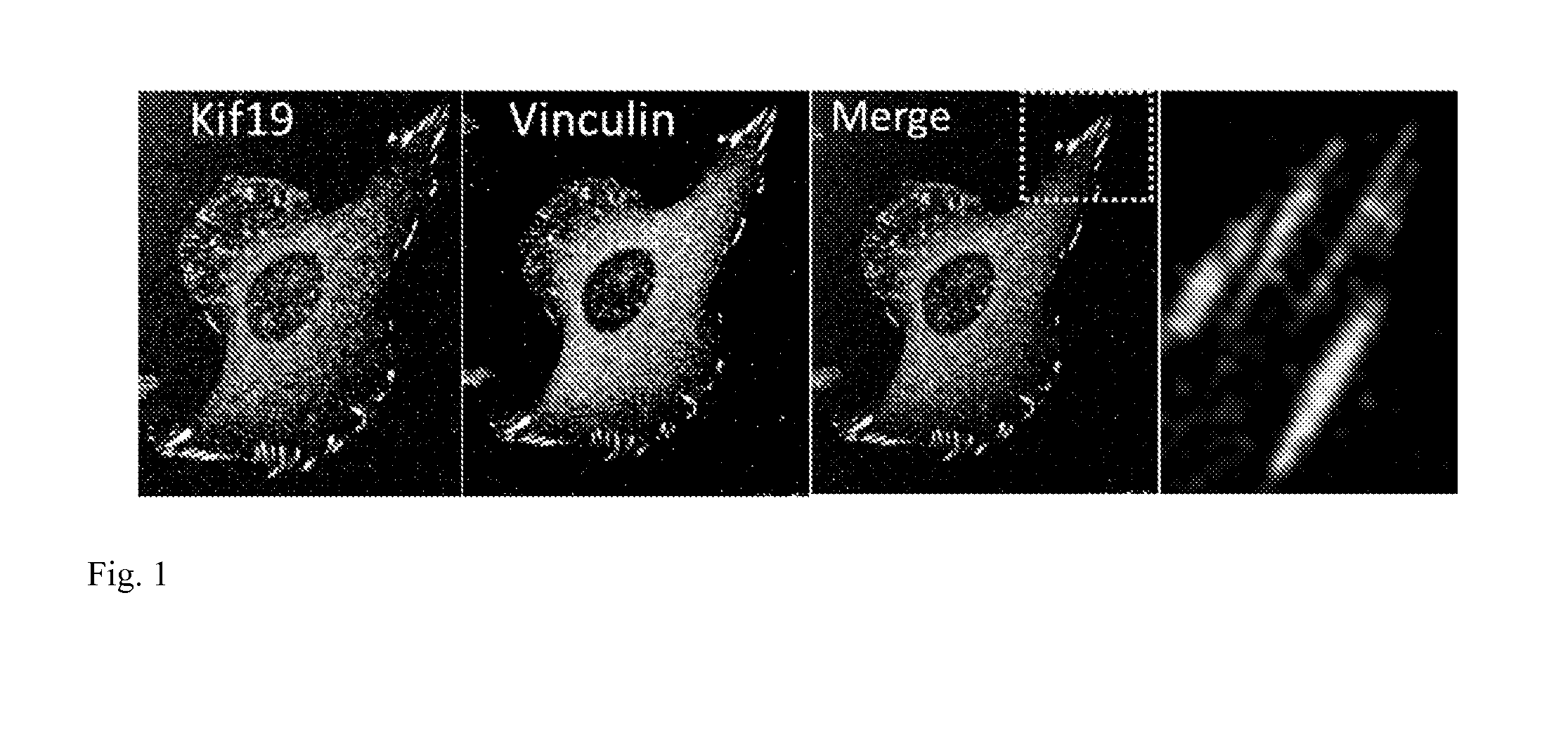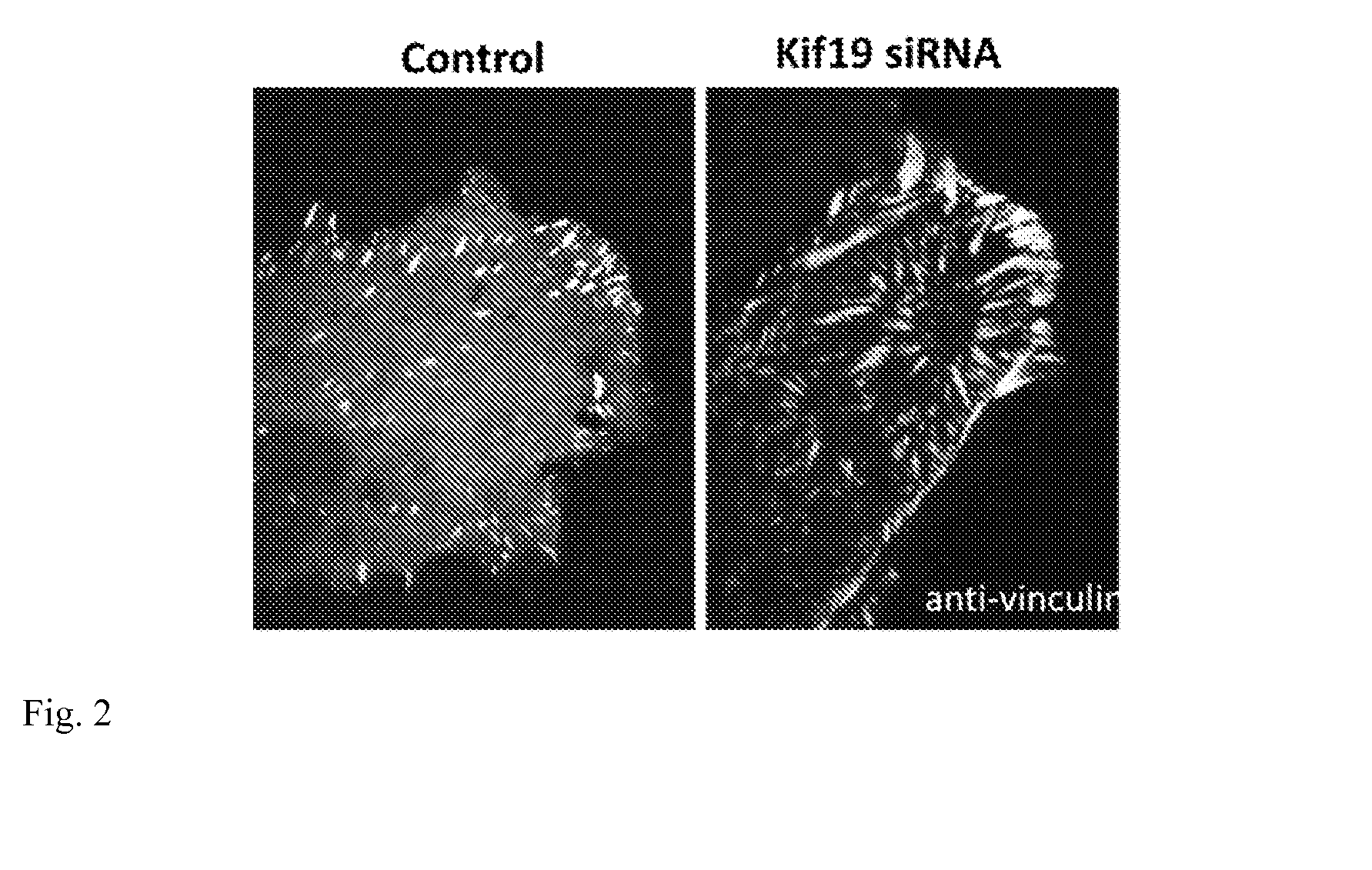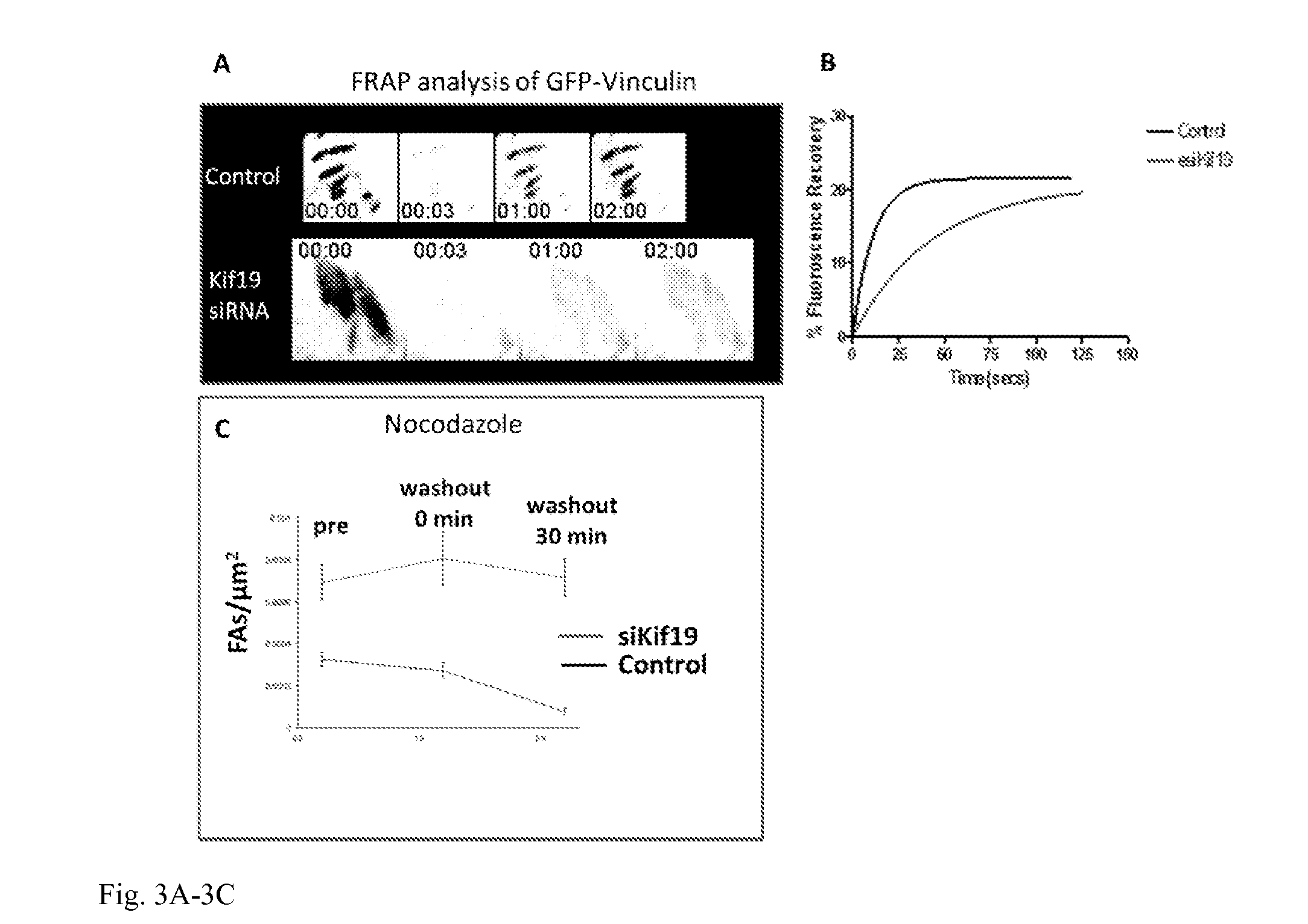Methods and compositions to inhibit metastasis and to treat fibrosis and to enhance wound healing
a technology of metastasis and compositions, applied in the direction of drug compositions, cardiovascular disorders, enzymology, etc., can solve the problems of hyperproliferation and cell motility
- Summary
- Abstract
- Description
- Claims
- Application Information
AI Technical Summary
Benefits of technology
Problems solved by technology
Method used
Image
Examples
example 1
[0133]Kif19 normally promotes cell motility by stimulating the disassembly of integrin-based adhesion complexes that link cells to the underlying extracellular matrix. siRNA-mediated depletion of Kif19 inhibits 1) cancer cell motility in vitro; 2) matrigel invasion of primary tumor cells ex vivo, 3) and movement of cells into excision wounds in mice.
[0134]FIG. 1 shows a confocal micrograph showing a human U2OS cell double labeled for Kif19 and the FA protein, vinculin. The far right panel is a higher magnification of the region boxed in “merge”. As shown in FIGS. 2 and 3, the depletion of Kif19 from tissue culture cells induces an increase in focal adhesion size and stability. FIG. 2 shows regions of U2OS cells (human Osteosarcoma) immunostained for the focal adhesion protein vinculin. The depletion of Kif19 by siRNA induces a substantial increase in the size and number of focal adhesions particularly in the cell interior. A time series was obtained showing the assembly / disassembly ...
example 2
[0139]Cep192 promotes cell motility via the nucleation of centrosomal microtubules. Cep192 is a centrosomal scaffolding protein required for the nucleation of microtubules from centrosomes. siRNA-mediated depletion of Cep192 inhibits 1) the motility of cancer cells and primary human keratinocytes in vitro; 2) matrigel invasion of primary tumor cells ex vivo; 3) axon outgrowth from primary neurons. This additionally identifies Cep192, over Kif19, as a therapeutic target for mitigation of pain after wounding.
[0140]The centrosome is an organelle that serves as the main microtubule organizing center (MTOC) of the animal cell as well as a regulator of cell-cycle progression. Centrosomes are composed of two orthogonally arranged centrioles surrounded by an amorphous mass of protein termed the pericentriolar material (PCM). The PCM contains proteins responsible for microtubule nucleation and anchoring.
[0141]Cep192 is a centrosome scaffolding protein required for centrosomal microtubule nuc...
example 3
[0146]Angiogenesis of fetal hearts 48 hours after treatment: As shown in FIG. 14, Cep192 siRNA-treated hearts two days after siRNA treatment have no apparent vessels. In the control, however, migrating endocaridal cells have penetrated the ventricular wall and formed a fine vascular network. Thus, the depletion of Cep 192 dramatically inhibits the angiogenic process by the endocardial cells.
Methods
[0147]Np-si application for experiments: This can be performed by mixing the nanoparticles in either sterile saline or water to achieve the targeted concentration in no more than 10 ul aliquots. The solution is applied directly to the wound, or target area, where it is rapidly absorbed. Controls include i) non-specific siRNA nanoparticles and ii) water or saline alone. Two different treatment regimens are exemplified here: In regimen 1, np-si are administered daily beginning 30 minutes after wounding though day 8. In regimen 2, np-si are administered every other day beginning 30 minutes af...
PUM
| Property | Measurement | Unit |
|---|---|---|
| movement | aaaaa | aaaaa |
| focal adhesion | aaaaa | aaaaa |
| size | aaaaa | aaaaa |
Abstract
Description
Claims
Application Information
 Login to View More
Login to View More - R&D
- Intellectual Property
- Life Sciences
- Materials
- Tech Scout
- Unparalleled Data Quality
- Higher Quality Content
- 60% Fewer Hallucinations
Browse by: Latest US Patents, China's latest patents, Technical Efficacy Thesaurus, Application Domain, Technology Topic, Popular Technical Reports.
© 2025 PatSnap. All rights reserved.Legal|Privacy policy|Modern Slavery Act Transparency Statement|Sitemap|About US| Contact US: help@patsnap.com



